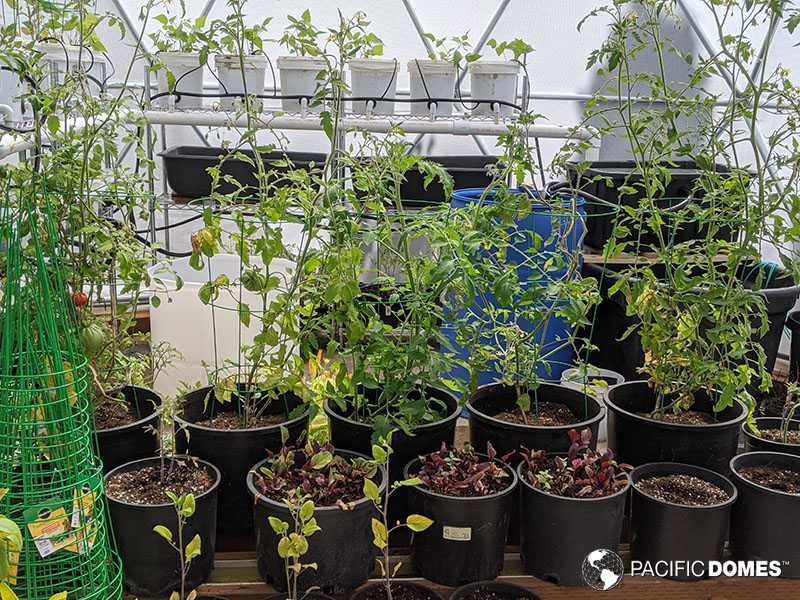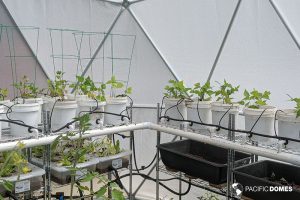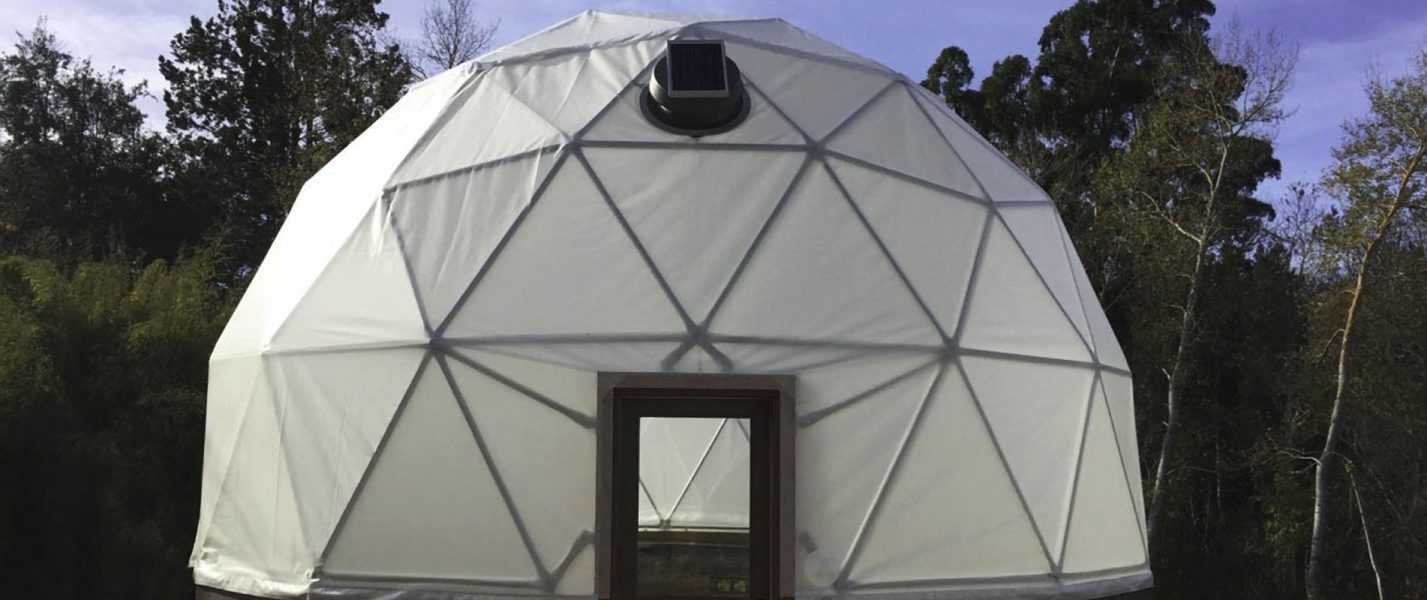How to Maximize Your Greenhouse: Interior Layout
If you are searching for a greenhouse, you may enjoy greenhouse design types “How to Maximize Your Greenhouse: Part-1”.
You have a greenhouse, but you’re feeling challenged by how to maximize your interior layout for optimal results. Early on, the way to make this happen is with innovative, practical and functional design – by creating a flexible roadmap that expands with you.

In a greenhouse, the cost of providing the right environment for your plants is the same, whether you are utilizing half of the space with a conventional bench system or whether you are filling the horizontal and vertical spaces with plants. Every cubic foot that contains plants means optimal harvest.
Whatever your chosen growing medium – soil, aquaponic or hydroponic, it’s wise to keep top-of-mind that happy plants need air, light and space – you don’t want to overcrowd. Here’s a few simple, yet, practical questions you might want to ask yourself, just getting started. As you progress along your journey, feel free to add to this list and create your own checklist …
- To help you stay on-track and productive – along each step of your journey, ask yourself, “Am I going to be able to do this in a cost-effective manner that’s going to maximize my greenhouse?”
- Plant directly in high-quality garden soil, raised beds or hanging baskets?
- How about space-age farming with aeroponic, hydroponic systems or growing towers?
- While you may have ample greenhouse space for crops you’d like to grow, are they a good fit? How to best manage plants that tend to take over the entire greenhouse?
- How much spacing will plants need?
- How much time from seed to harvest? Simplify harvesting by planting in zones?
- Will cost and labor exceed the reason for planting this crop? Plant crops that might be costly or difficult to find?
- Sometimes, it’s less costly to buy locally, rather than grow your own. Can this in-season crop be bought at farmer’s markets without sacrificing freshness and flavor?
- Plan on storing your harvest? Smart, organized storage is essential. Are there challenges around production, harvesting and short-term storage space?
Once you’re satisfied that you’ve addressed a few basic questions, you’ll find that the more organized you are, the more productive you will be. Maximizing every bit of your greenhouse growing space year-round will, not only, help you recover your investment, but the pre-planning steps that you take from the very beginning are sure to reward you with a bountiful harvest that your family will enjoy eating – and, that you’ll be proud of.
Dirt, Gravel, Concrete Flooring and Steps in Between
This is a personal choice depending on the type of greenhouse, its function and where it’s situated. Greenhouses need, not just good, but excellent drainage – so, spending a bit of time on this is wise.
- Soil expands your growing space – however, you want to design walkways to prevent water from creating muddy messes.
- Gravel provides excellent drainage – a landscape cloth underlayment prevents weeds.
- Concrete can be a deterrent to entry by pesky critters – however, it’s hard to stand on for long periods of time – it’s best use is when reserved for stationary areas, such as, storage; or, combined with gravel in entryways and traffic areas.
A greenhouse needs planned paths, so you can navigate comfortably around your plants. Design a multi-purpose garden path with places to stand for watering, weeding and harvesting ease. You can, also, expand planting areas by placing stepping stones in planting beds.
Heating, Cooling & Ventilation
Again, this is a personal choice depending on the type of greenhouse, its function and where it’s situated. Greenhouses need heating, cooling and ventilation – so, spending a bit of time exploring various greenhouse features is wise.
- Solar/ Wood-burning Stove or Furnace/ Infrared system/ Gas powered?
- Exhaust Fan & Louver System?
- Horizontal Air-flow Fans?
- Fan & Pad Coolers?
- Retractable Roof – Side Walls & Vent Kits?
- Shade-cloth?
- Utilities and Accessibility?
Whether or not, you are going completely off-grid or have access to utilities, planning for water, solar or electric and other hook-ups early on is key to maximizing your greenhouse. It’s an opportunity to practice sustainability, too.
How do you plan to water?
- Set up a rain-gutter system for rainwater harvesting ‒ plants do so much better with rainwater.
- To keep your plants growing healthy and happy, a greenhouse watering system is an important part of day-to-day operations ‒ long hoses take up space that could be used for growing plants.
- Investigate types of Greenhouse watering systems ‒ how do automatic watering systems work?
There’s everything from hand-watering to overhead irrigation to overhead misters/ sprinklers. Then, there’s sub-irrigation/ trickle-drip-irrigation/ circulating pvc / perimeter Irrigation to capillary matting systems/ hydroponics and aeroponics ‒ ebb and flow systems, trough systems.
Outfitting Your Greenhouse
When it comes to outfitting your greenhouse, it pays to think in all directions. Also, it’s a chance to make the most of what you already have on-hand. And, there’s nothing wrong with borrowing ideas and inspiration from other successful greenhouse growers who love to share their photos, videos and stories on the internet.
Many residential greenhouse gardeners like to install raised beds with amended soil – these can be built using a variety of materials; and, are readily available as reusable prefab units. Raised beds along perimeter walls serve as buffers for cold and wind.
Take advantage of headroom space in your greenhouse. While the sustainable practices of organic farming are very popular, advancements in technology have made greenhouse aquaponics, hydroponics and vertical farming very practical – consider doing both. For example, use a combination of raised beds, benches or shelves; and, grow up with hanging baskets, planter walls, and/or vertical tower gardens.
Vertical greenhouse production is gaining in popularity and automation has taken production to a whole new level with efficient LED lighting systems and automated watering and nutrient delivery equipment. There’s everything from mobile racks and benches to roll-out benches and trays. How about growing tomatoes suspended by overhead trusses or using hanging baskets that move along high-wires?

The following are some creative ways in which production space can be increased:
- Utilizing under-bench storage space.
- Multi-shelf carts – start seedlings and cutting on carts in a growing area where they can later be rolled to where they will be transplanted.
- Staging benches and work bench-stations.
- High-wire and trellis vegetables.
ZONES
- Potting area/ storage area/ propagation area for seedlings/ transplants/ edible plants & non-edibles/ area for rubbish and compost.
- Separate into zones according to compatible plant types, harvest time, watering and temperature requirements.
- Consider which plants do best in full-sun or partial-shade.
Be Prepared…
- Consider hanging a handy clipboard with a supply checklist.
- Transplanting can be a space saver and most plants do well when transplanted. Be prepared for when it’s time to transplant seedlings.
- Remember to label your plants and follow-along with dates – from seeding to transplanting.
16’ Greenhouse Dome & Aerial Tower System (2:40)

We’re Here to Help
If you liked this post and would like more information on geodesic-engineered GrowDome building systems our friendly Customer Support Team is always available to answer your questions and discuss your needs.
